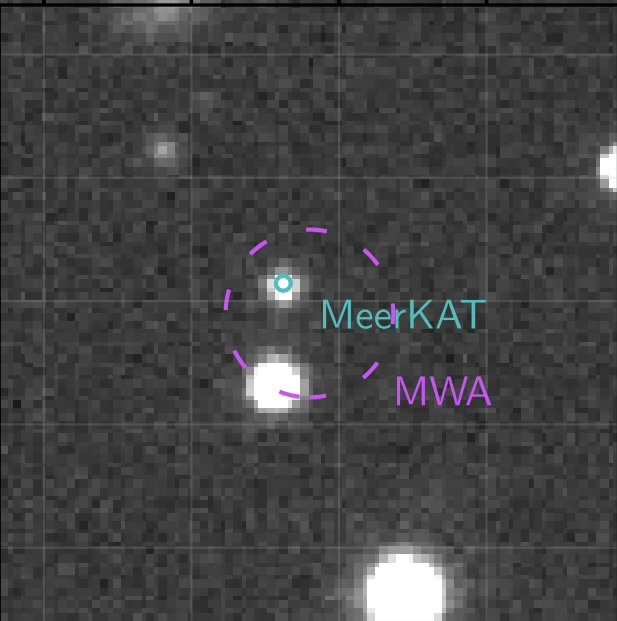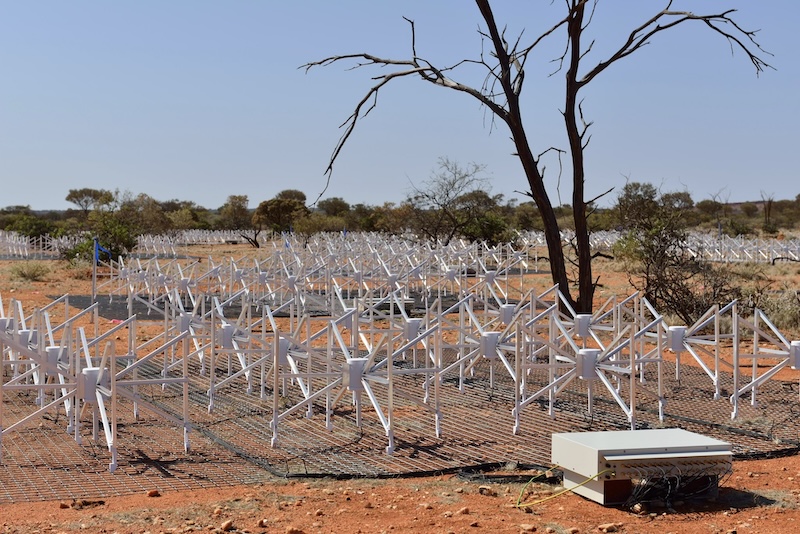22/01/2025 - A radio transient with the longest period yet seen, 2.9 hrs, was discovered by a team including Nanda Rea of ICE-CSIC and published in December 2024.
The team found the transient in low-frequency archival data from the SKAO precursor Murchison Widefield Array (MWA). Such long-period radio transients are a fairly new area of research and it is challenging to determine how the signals are generated. In this case, the team managed to find the probable source for the energy bursts, using another SKA precursor, MeerKAT, and optical SOAR observatory, and determine that the optical counterpart is a cool M3 dwarf star. This means that the signal is not due to a magnetar, but more likely is generated in a dwarf binary system scenario.
Read more:
ICE-CSIC press release
ICRAR press release
Paper: Hurley-Walker et al., 2025

Using 2 SKAO precursors, the team could trace the 2.9 hr long-period transient radio source to a specific object and measure its counterpart in optical to find an M3 dwarf star. Image credit: Hurley-Walker at al, 2024..

The team found the radio signal in archival data from the Murchison Widefield Array radio telescope, an SKAO precursor. Image credit: ICRAR/Curtin.

